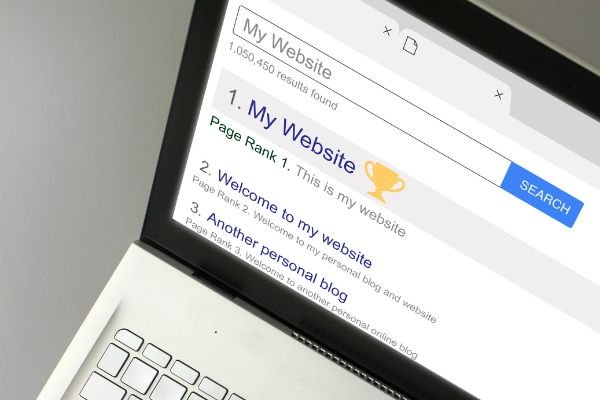How Long Does SEO Usually Take To Show Real Results?
Most businesses see initial SEO improvements within three to six months of implementing comprehensive digital strategies. However, some competitive industries might require six to twelve months for noticeable changes. Search engines need time to recognize and trust your website’s content quality. The timeline depends on your starting point and competition level.
Search engines evaluate 200+ ranking factors, with quality backlinks being crucial but time-consuming to build. Your website must establish authority through consistent, valuable content that others trust enough to link to. Results depend on your site’s age, authority, and keyword competitiveness – newer sites in competitive niches take longest.
Though frustrating, SEO provides sustainable, compounding traffic growth unlike paid ads that stop when payment ends. Focus on quality content creation while rankings gradually improve for lasting business value.

How Long Does SEO Take to Show Results?
Most websites see SEO improvements within three to six months of implementation. Some competitive industries may need six to twelve months for meaningful results. The exact timeline varies based on your website’s current status and industry. Your dedication to SEO efforts directly impacts how quickly you’ll see progress.
Several key factors determine your SEO timeline and success rate. Your website must be easily crawlable by search engine bots first. The amount of time and resources you invest matters significantly. Websites with consistent content updates typically see faster improvements than inactive ones. Your competition level and keyword difficulty also affect timing considerably.
Why Does SEO Require This Much Time?
Search engines now evaluate websites using increasingly sophisticated algorithms and ranking factors. The internet grows larger every day with millions of new pages. Search engines must carefully analyze more content than ever before. This thorough evaluation process naturally takes more time than simpler past systems. Quality assessment cannot be rushed in today’s complex digital landscape.
Modern search algorithms consider over 200 different ranking signals simultaneously. Building authority through quality backlinks requires months of consistent effort. Search engines need time to trust new or updated content. They watch how users interact with your pages over time. This patience ensures only genuinely valuable content ranks highly in results.

What Factors Affect SEO Timeline and Results?
Two main categories influence how quickly SEO produces results for businesses. Business factors focus on your internal strategy and market conditions. SEO factors involve the technical elements that affect search rankings. Understanding both helps set realistic expectations for your SEO timeline. Each factor plays a crucial role in determining success speed.
Key Business Factors That Impact SEO Speed
Company Leadership Support
Your organization’s leadership must understand and value SEO for success. Without executive buy-in, securing necessary resources becomes nearly impossible. Limited support means smaller budgets and fewer team members. This resource shortage typically extends the time needed for results. Strong leadership backing accelerates your SEO progress through proper investment.
Success Metrics and Goals
Different organizations measure SEO success using various performance indicators. Common metrics include website rankings, organic traffic, and lead generation. Some companies focus on phone calls or direct sales conversions. Your chosen success metrics directly influence your expected timeline. Traffic improvements often appear faster than qualified lead generation results.
Market Competition Level
Some industries invest heavily in SEO, creating intense competition. Digital marketing sectors typically face the strongest SEO competition. Less competitive niches often see faster ranking improvements overall. Research your competitors’ SEO efforts to understand your market. Higher competition requires more time and effort for visible results.
Available SEO Budget
While money cannot directly purchase better rankings, budgets matter significantly. Larger budgets enable hiring experienced SEO professionals and better tools. You can create more content and build quality backlinks faster. Smaller budgets still produce results but typically require more time. Budget constraints affect your ability to execute comprehensive SEO strategies.
Team Resources and Capabilities
Successful SEO programs require three essential resources working together effectively. You need skilled talent who understand modern SEO best practices. Professional SEO tools help analyze and improve your website performance. Sufficient time allocation ensures consistent progress toward your goals. Missing any resource element slows down your SEO results significantly.
Overall SEO Strategy Quality
Your strategic approach remains the most critical business factor for success. A well-planned strategy efficiently uses your available time and resources. Poor strategies waste effort on low-impact activities that delay results. Investing time in strategic planning pays dividends through faster improvements. Your strategy determines where to focus efforts for maximum impact.
Technical SEO Factors That Determine Results Timeline
Website Crawling and Indexing Status
Search engines must successfully crawl and index your website first. Without proper crawling, your site remains invisible in search results. These fundamental steps must happen before any rankings can occur. Use Google Search Console to quickly identify and fix crawling issues. Proper technical setup ensures search engines can access your content. Regular monitoring helps catch problems before they impact your rankings.
Several technical elements affect how often search engines visit your site. Your crawl rate settings control how frequently bots access pages. Regular XML sitemap updates help search engines find new content faster. Strong internal linking helps bots discover all your important pages. Higher crawl frequency typically leads to faster ranking updates and improvements. Optimizing these elements reduces the time between publishing and ranking.
Backlink Profile Strength
Your backlink profile remains one of the most influential ranking factors. Search engines view backlinks as votes of confidence from other websites. Academic citations inspired Google’s original approach to evaluating backlinks. Websites with stronger backlink profiles typically see faster SEO results. Search engines trust established sites more than unknown ones immediately. This trust translates directly into higher rankings and more traffic.
Building a quality backlink profile requires consistent effort over time. New websites must earn trust through gradual link acquisition strategies. Focus on earning links from relevant, authoritative websites in your industry. Natural link building takes months but provides lasting SEO value. Rushed link building often backfires and delays positive results significantly. Quality always matters more than quantity in successful link building.
Domain Age and History
Older domains often perform better in search results than newer ones. Established domains have longer relationships with search engines over time. They typically possess more extensive backlink profiles from years online. However, domain relevance matters more than age for long-term success. Choose domains that match your business rather than just older ones. Your domain name should reflect your brand and industry clearly.
New domains can still achieve strong rankings with proper optimization. Google states that domains need only a few months to compete. Focus on building quality content rather than worrying about domain age. Your domain’s history matters less than your current SEO efforts. Consistent optimization overcomes any initial age-related ranking disadvantages over time. Fresh domains sometimes perform better without negative historical baggage.
Target Keyword Competition
Keyword difficulty directly impacts how quickly you’ll see ranking improvements. Short, generic keywords like “hotels” face extreme competition from established sites. Long-tail keywords with specific intent typically rank faster for new websites. Research keyword competition before setting your ranking timeline expectations. Choose initial targets that match your current domain authority level. Strategic keyword selection accelerates your path to meaningful traffic growth.
Understanding competition levels helps set realistic SEO timeline expectations. High-competition keywords might take years for new sites to rank. Lower competition terms can show results within three to six months. Balance your keyword strategy between achievable and aspirational ranking targets. Track progress on easier keywords while building toward competitive terms.
Content and Search Intent Alignment
Your content must solve the exact problem users are searching for. Mismatched search intent prevents rankings regardless of other optimization efforts. Analyze top-ranking pages to understand what users actually want. Create content that comprehensively addresses identified user needs and questions. Proper intent matching accelerates your path to higher rankings significantly. Search engines reward content that satisfies user queries completely.
Different search intents require different content approaches and formats. Informational searches need detailed explanations and comprehensive guides. Transactional searches require clear product information and purchase options. Navigational searches should lead directly to specific pages or resources. Understanding these distinctions improves your content’s ranking potential dramatically.
On-Page SEO Elements
Multiple on-page factors influence how quickly search engines understand your content. Title tags must include your target keywords for relevance signals. Meta descriptions improve click-through rates from search results pages. Strategic keyword placement throughout content reinforces your topical focus. Proper header tag structure helps both users and search engines. These elements work together to communicate your content’s value clearly.
Internal linking connects related content and distributes ranking power effectively. Missing these optimizations extends the time needed for SEO success. Following on-page best practices ensures search engines properly categorize your content. Small optimization improvements compound into significant ranking gains over time. Consistent attention to these details separates successful SEO campaigns from failures.
Page Speed and User Experience
Google’s Core Web Vitals measure critical aspects of page user experience. Loading speed affects how quickly users can access your content. Visual stability prevents annoying layout shifts during page loading. Response time measures how fast pages react to user interactions. Poor performance in these areas delays positive SEO results considerably. Modern users expect instant access to information and smooth browsing.
Fast, responsive websites rank better and convert visitors more effectively. Use PageSpeed Insights to identify specific performance issues needing attention. Work with developers to implement technical improvements for better scores. Speed optimizations often produce some of the fastest SEO improvements. Users and search engines both reward excellent website performance consistently. Mobile performance particularly impacts rankings as mobile searches dominate today.
Technical SEO forms the foundation for all other optimization efforts. Without proper technical implementation, content and link building cannot succeed. Regular audits ensure your site maintains optimal performance over time. Investing in technical excellence reduces the overall time to SEO success.

How to Optimize Your SEO Timeline for Faster Results
Six months can feel endless when waiting for SEO results to appear. However, a structured approach maximizes your efforts during this period. Every website requires a unique timeline based on specific needs.
Month 1: Foundation and Assessment
Install essential tracking tools like Google Analytics 4 and Search Console immediately. Verify that search engines can properly crawl and index your pages. Conduct a comprehensive SEO audit to identify improvement opportunities quickly. Analyze competitor strategies to understand your market’s SEO landscape better.
Month 2: Critical Fixes and Local Presence
Address your most serious technical SEO issues discovered during the audit. Create or claim your Google Business Profile for local search visibility. Research relevant keywords for your most important landing pages carefully. Begin implementing these keywords into your existing high-value content strategically.
Month 3: Content Expansion and Link Building
Expand keyword optimization to additional important website pages throughout your site. Develop high-quality content specifically designed to attract natural backlinks. Continue fixing remaining technical issues based on their potential impact. Begin identifying potential link partners in your industry or niche.
Month 4: Outreach and Performance Review
Start reaching out to relevant websites with your linkable content assets. Monitor early SEO performance indicators like crawl frequency and indexation rates. Continue addressing technical issues to improve overall site health consistently. Document which optimization efforts show the most promising early results.
Month 5: Content Development and Optimization
Continue optimizing existing pages while creating new targeted content pieces regularly. Research trending topics and gaps in your current content coverage. Update older content with fresh information and improved optimization techniques.
Month 6: Evaluation and Strategy Refinement
Analyze six months of performance data to measure progress achieved successfully. Compare current rankings, traffic, and conversions against your initial baseline. Develop your next quarter’s SEO strategy based on proven successes.
Conclusion
SEO success requires patience, strategy, and consistent effort over three to six months. While competitive industries may need up to twelve months, your dedication determines results. Focus on technical optimization, quality content creation, and strategic link building. These foundational elements compound over time, creating sustainable growth unlike paid advertising. Remember that SEO builds lasting value through gradual improvements in rankings and traffic. Start with achievable goals while working toward competitive keywords systematically. Monitor your progress monthly and adjust strategies based on performance data. The time invested in SEO today generates exponential returns tomorrow through increased visibility and organic traffic.
Frequently Asked Questions
Why does SEO take 3-6 months to show results?
Search engines need time to discover, crawl, and evaluate your website’s content. They analyze over 200 ranking factors before determining your position. Building authority through quality backlinks takes months of consistent effort. Search engines must observe user interactions with your content over time. This careful evaluation process ensures only valuable content ranks highly.
Can I speed up my SEO results?
Yes, you can accelerate SEO results through strategic actions and investments. Fix technical issues immediately to remove ranking barriers from your site. Create high-quality, user-focused content that matches search intent perfectly. Build relationships with relevant websites for natural backlink opportunities. Focus on less competitive keywords initially for faster ranking improvements.
What factors most affect SEO timeline?
Your website’s current authority and backlink profile significantly impact SEO speed. Industry competition levels determine how much effort you’ll need to rank. Technical issues like crawling problems can delay all SEO progress indefinitely. Your budget affects your ability to create content and build links. The keywords you target influence how quickly you’ll see meaningful results.
How do I know if SEO is working?
Monitor organic traffic growth in Google Analytics to track SEO progress. Check keyword rankings weekly using professional SEO tracking tools. Watch for increases in impressions and clicks in Google Search Console. Track conversions from organic traffic to measure business impact. Early indicators include increased crawl frequency and new page indexations.
Should I do SEO or paid advertising?
Both SEO and paid advertising serve different purposes in marketing strategies. SEO provides long-term, sustainable traffic that grows over time. Paid advertising delivers immediate traffic but stops when budgets end. Most successful businesses use both channels for comprehensive online visibility. The combination creates a balanced approach to digital marketing success.

Mike has over 5 years of experience helping clients improve their business visibility on Google. He combines his love for teaching with his entrepreneurial spirit to develop innovative marketing strategies. Inspired by the big AI wave of 2023, Mike now focuses on staying updated with the latest AI tools and techniques. He is committed to using these advancements to deliver great results for his clients, keeping them ahead in the competitive online market.
